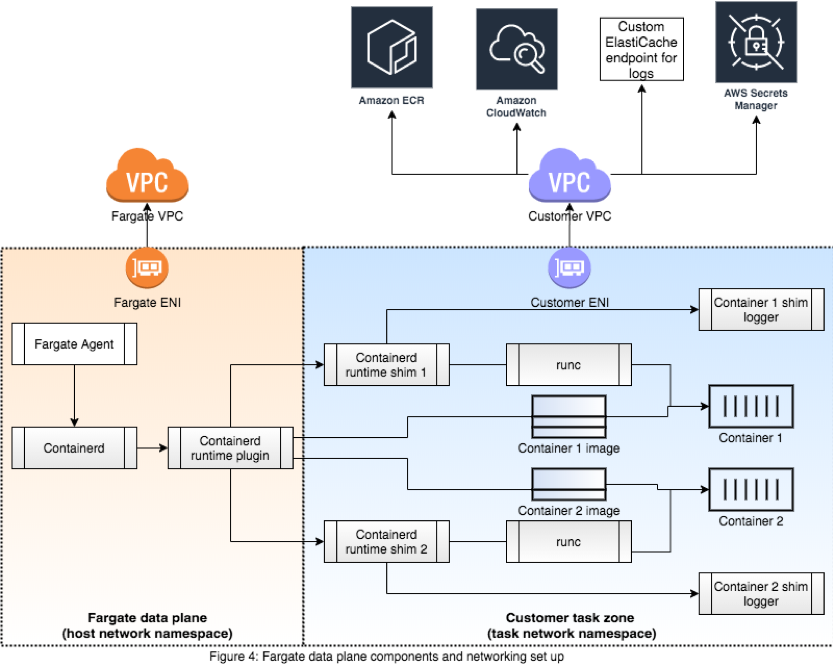Containers
Category: AWS Fargate
AWS Fargate now supports UDP load balancing with Network Load Balancer
From machine learning inference to gaming, from web hosting to batch processing, customers are using AWS Fargate to innovate faster and build products without maintaining servers. Many of you told us how important it is for you to run UDP-based applications in Fargate in AWS containers roadmap issue #445. User Datagram Protocol, more popularly known […]
Save the date: AWS Container Day at KubeCon
Start off your KubeCon 2020 with AWS at Container Day on August 17th, 8:00 AM – 4:00 PM (PDT). In this full-day virtual event, we’ll cover how Amazon EKS makes it easy to deploy, manage, and scale containerized applications using Kubernetes on AWS. Virtual sessions throughout the day will consist of technical deep dives, product […]
AWS and Docker collaborate to simplify the developer experience
Developers can now use Docker Compose and Docker Desktop to deploy applications to Amazon ECS If you were to ask any developer who has worked with containers, you find out they have used or are aware of Docker Desktop and the Docker CLI for building applications on their desktop. They’ve also most likely used Docker […]
Infosys reimagines technology skill assessments with Wingspan using AWS Fargate
This post has been co-authored by Arpan Patro, Lead Architect at Infosys and Satheesh Kumar, Solutions Architect at AWS Infosys is a global leader in next-generation digital services and consulting. Infosys has a strong workforce of over 240K employees spread across the globe providing business consulting, information technology, and outsourcing services. Challenge: Infosys serves their clients […]
Introducing server-side encryption of ephemeral storage using AWS Fargate-managed keys in AWS Fargate platform version 1.4
This post was contributed by Yuling Zhou, Eduardo Lopez Biagi, and Paavan Mistry. Today, we introduced server-side encryption of ephemeral storage in AWS Fargate platform version 1.4. The ephemeral task storage is automatically encrypted with industry-standard AES-256 encryption algorithm using AWS Fargate-managed keys for the updated platform version. This feature requires no additional configuration from […]
Under the hood: AWS Fargate data plane
Today, we launched a new platform version (1.4) for AWS Fargate, which bundles a number of new features and capabilities for our customers. You can read more about these features in this blog post. One of the changes we are introducing in platform version 1.4 is replacing Docker Engine with Containerd as Fargate’s container execution […]
AWS Fargate platform versions primer
AWS Fargate is a managed service to run containers. This is an AWS managed service that allows users to launch containers without having to worry about the infrastructure underneath. In another blog post, we explored in detail the new features and the changes we introduced with AWS Fargate platform version 1.4.0. Let’s step back and […]
AWS Fargate launches platform version 1.4.0
AWS Fargate is a managed service to run containers. Fargate allows customers to use Amazon Elastic Container Service (ECS) and Amazon Elastic Kubernetes Service (EKS) to launch applications without the burden of having to deal with the undifferentiated heavy lifting of maintaining, patching, scaling, securing, life-cycling the infrastructure. While Amazon EC2 abstracts away hypervisors and […]
Enabling cross-account access to Amazon EKS cluster resources
Amazon Elastic Kubernetes Service (Amazon EKS) is a managed service that makes it easy for you to run Kubernetes on AWS without needing to stand up or maintain your own Kubernetes control plane. The recent launches of managed node groups and Amazon EKS on AWS Fargate removes the need to provision and manage infrastructure for pods. Kubernetes […]
Using EKS encryption provider support for defense-in-depth
Gyuho Lee, Rashmi Dwaraka, and Michael Hausenblas When we announced that we plan to natively support the AWS Encryption Provider in Amazon EKS, the feedback we got from you was pretty clear: can we have it yesterday? Now we’re launching EKS support for the encryption provider, a vital defense-in-depth security feature. That is, you can […]








